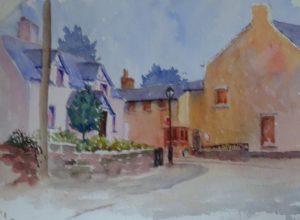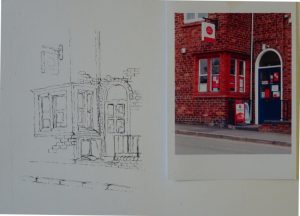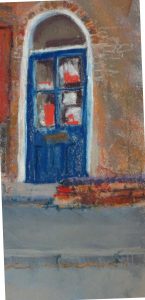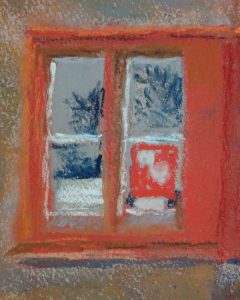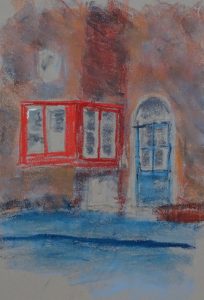I used a T square to straighten the door frame! Of course I worked over the guide line afterwards – after all my strictures on the use of rulers in drawings that are going to be painted, I couldn’t let it stand. Indeed, the frame is already too dominant.
My good intentions to do work on this painting during the week remained just that. The beautiful light we get in Summer encourages painting but the garden doesn’t stop growing, It is enjoying the light too.
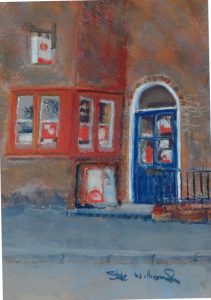 So we have the pastel, completed, and I’m reasonably happy with it,
So we have the pastel, completed, and I’m reasonably happy with it,
then the long view in watercolour, which I also like, and finally,
the line and wash which was less successful. Indeed, I think I prefer it as line only!
Who would think that I would ever prefer one of my drawings to a painting!

